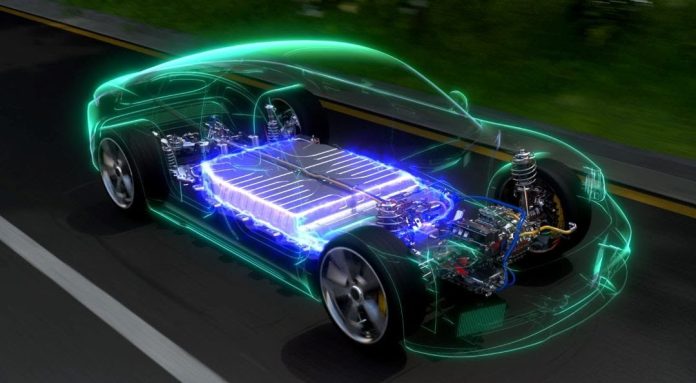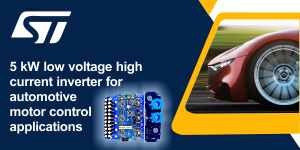India’s transition toward electric mobility has evolved into a strategic priority, going beyond environmental concerns. The vision of making in India an EV manufacturing hub entails scaling production as well as indigenizing core technologies and critical raw material supply chains. Given the global uncertainties and intense competition in lithium-ion battery manufacture and advanced powertrain development, India is now putting aggressive policies, R&D, and industrial collaborations toward the localization of high-value components critical for electric vehicles.
India imports over 75% of its advanced components for electric mobility:
Li-ion cells, semiconductors, permanent magnets, and high-end electronic control units (ECUs). Heavy dependence on countries like China, South Korea, and Japan leaves India exposed to uncertainties and vulnerabilities with respect to pricing, logistics, and geopolitics.
Indigenizing technology and raw materials thus give several advantages:
- Supply-chain resilience,
- Foreign exchange savings
- Technological sovereignty
- Job creation in high-tech sectors
- Boost to Make-in-India
Battery Technology Localization Current Development:
- ACC PLI Scheme (₹18,100 crore): Investment attraction from Reliance New Energy, Ola Electric, and Rajesh Exports, setting up a 50 GWh Li-ion cell manufacturing capacity.
- Indigenous Chemistry R&D: ISRO has made its Li-ion cell technology available to ten Indian companies. Lithium-titanate and aluminum-air batteries are being promoted by startups like Log9 Materials in an effort to avoid reliance on imports.
- Recycling Push: Businesses like Attero and Lohum are establishing urban mining hubs to recover lithium, cobalt, and nickel from used batteries in the United States.
Progress in Battery Cell Indigenization in India:
| Parameter | 2020 Status | 2024 Update | 2030 Target (Policy)
|
| Domestic cell capacity | <1 GWh | 8 GWh under construction | 100 GWh+ |
| Local battery chemistry | Mostly imported | LFP, LTO, Na-Ion pilots underway | High-energy solid-state
|
| Raw material sourcing | 100% import | Recycling covers ~15% | ~40% through recycling |
| R&DecosystemFragmented | DRDO, ISRO | DST-backed labs unified | Global-standard centres |
Power Electronics and Motors:
Electric powertrains are approximately 35–40% of the cost of EVs. Assembly is carried out domestically, yet major components such as inverter modules, SiC MOSFETs, high-performance IGBTs, and rare earth magnets are still mostly imported. Indigenization efforts include:
- Semiconductor Mission (₹76,000 crore): With the objective of fabricating SiC wafers for power devices.
- Magnet Localization: India Rare Earths Ltd. in collaboration with Toyota Tsusho for the production of NdFeB magnets.
- Motor Innovation: Bharat Forge and Lucas-TVS for the development of indigenous PMSM and switched reluctance motors for 2W/3W/4W.
Critical Raw Materials:
India has yet to discover lithium, cobalt and nickel in economically viable quantities, prompting a multi-pronged strategy to secure these critical minerals. To ensure supply, Khanij Bidesh India Ltd. (KABIL) has acquired stakes in lithium blocks in Argentina and cobalt mines in Congo. Domestically, the government has allocated ₹12,000 crore for mineral exploration in Rajasthan, Karnataka and Meghalaya. Simultaneously, advanced trials of exploration in Rajasthan, Karnataka and Meghalaya. Simultaneously, advanced trials of sodium-ion and zinc-air batteries are underway to reduce dependence on lithium and cobalt, reflecting India’s broader push for resource dependence on lithium and cobalt, reflecting India’s broader push for technological innovation in the clean energy sector.
Key Indian players into technology and raw-material indigenization for electric mobility:
- Reliance New Energy Ltd steps into the center-stage by providing gigafactories for lithium-ion-cell manufacturing, battery recycling, and integrated supply-chain solutions via strategic acquisitions across the globe and local industrial setups.
- Ola Electric is making major investments in domestic battery R&D, cell production, and motor-drive systems indigenization to support its EV two-wheeler platform, with plans to become a fully vertically integrated EV technology company.
- The Tata Group, through Tata Motors and Tata Power, is ramping up localization efforts for EV platforms, including battery packs, electric powertrains (through Tata AutoComp), charging infrastructure, and software ecosystems, positioning itself as a full-stack Indian EV supplier.
- Mahindra Electric Mobility Ltd indigenizes electric drivetrain components and works with Indian suppliers for motors, controllers, and localized battery packs, especially for last-mile commercial EVs.
- Rajesh Exports / ACC Energy Storage is in the process of creating large-scale lithium-ion cell manufacturing units under the PLI scheme to reduce import dependency on battery cells.
Key Imported EV Raw Material’s Current Status:
| Material | Major Current Source | Import Dependency(est) | Domestic Strategy Initiated
|
| Lithium | Chile, Argentina | 97% | KABIL investments + Na-Ion tech |
| Cobalt | DRC, Australia | 98% | Recycling & alternative chemistries
|
| Nickel | Indonesia, Russia | 99% | Exploration in NE India |
| Graphite | China, Mozambique | 90% | Synthetic + natural development |
| Rare-earths | China | 95% | Magnet manufacturing joint-ventures
|
New Ventures and the R&D Environment:
More than 500 deep-tech start-ups are busy with the actualization of an array of breakthroughs in battery chemistry, power electronics, thermal management and charging infrastructure, further galvanizing innovation within India’s EV ecosystem. Exponent Energy, for instance, is in the business of design and development of climate-resilient battery packs, while Chara Technologies works on rare earth free motors. And there is advanced research in energy storage being carried out by top notch institutions.
Support for Policies and Regulatory Actions:
To further spur domestic manufacturing, the government continues to apply strong policy measures. For one, the FAME II scheme requires 50% localization for subsidy eligibility. The other is a strong incentive under the PLI Auto Components for ₹25,938 crore for manufacturing of EV-specific auto components such as motors, controller, here chargers. In addition, customs duties were revised in 2023-24, which disincentivize dependency on foreign supply chains.
Despite rapid strides having been made, significant challenges still persist:
- There’s the high entry cost for cell gigafactories and fabs.
- Lack of indigenous IP in advanced chemistries and power switches.
- Supply-side vulnerabilities in critical minerals.
- Risk of obsolescence in a rapidly evolving global EV market.
- A skills gap in high-precision semiconductor and materials sciences.
Conclusion:
Efforts to indigenize technology and raw materials for electric mobility are fast-tracked in India on an unprecedented scale. Through domestic R&D, favourable policy incentives, and public-private partnerships, India hence stands to emerge as the major EV manufacturing hub for the world by 2030. This transition, however, requires continued investment in innovation, aggressive mineral diplomacy, and rapid capability building in cell chemistry, semiconductors, magnetics, and recycling.
Strategic indigenization, therefore, is the way to self-reliance and thus to also make India a net exporter of advanced EV Technologies fostering national development and green industrial transformation.








